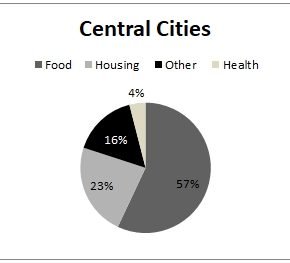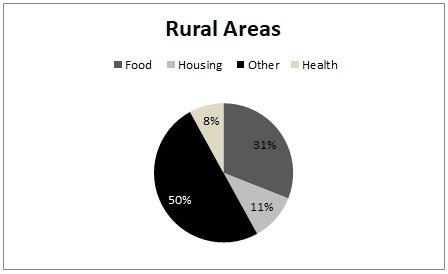Human beings are social creatures. Thousands of years ago, when people began settling in communities, the establishment of social infrastructures began. Human beings were first settled in small communities which grew to become bigger with time. As the communities became bigger and bigger, human beings got the chance to grow their social skills and utilize the advantage of living together as a community.
To be a member of a social group meant to be protected by other members of the community. Nowadays, it is difficult to find a community that works together and that is driven by a common goal. A myriad of people have lost connection with the people in their lives due to the serious problem of homelessness. It, therefore, goes without saying that the fight against the phenomenon of homelessness should be held in all levels: social, economical, political, cultural, etc.
Human is a social creature. Many thousands years ago, when people began organizing communities, first small, and then bigger and bigger, their social evolution began. To be a member of a social group meant to be protected by other members of the community. Nowadays, we observe thousands of people fell out of community, lost their connection with other people. Such phenomenon is described by the word “homelessness”. “Most often, its meaning is literal and prosaic: the absence of a domicile” (Baumohl 3).
The most dreadful is the knowledge that many people consider that absence of home is the negative side of homeless people. Still, the nature and essence of homelessness is far deeper and more frightful. Nevertheless, the fact is that homelessness is the social phenomenon is obvious. Still, it seems next to impossible that social services cope with it. It goes without saying that fight with the phenomenon of homelessness should be held on all levels: social, economical, political, cultural, etc.
The greatest hindrance to the fight against homelessness is the fact that people hold stereotypical ideas about the homeless. There is an established image of a homeless person: a dirty and fetid alcoholic who is lazy has no desire to work to earn some money.
Of course, society always label and stigmatize those people who does not fit the description of a normal member of society. Thus as stated stereotypes are the main obstacle preventing the reduction of the percentage of homeless people. It a fact that many people are negatively disposed towards homeless people and thus they look down upon them, and even mistreat them.
This kind of mistreatment arising from stereotypical ideas may even lead to deaths and severe injuries as the homeless protest mistreatment from their neighbors (Burrows, Pleace, and Quilgars 135). This kind of behavior may be explained by the fact that humans tend to be self-preservative and thus they will always be against people who can potentially cause them harm. However, we live in civilized communities and we should be able to reason things out and work with facts.
This is to say that, unless a member of the society has caused another member of the society harm, it will not be prudent to victimize them just because they belong to a disadvantaged part of the society. Still, homeless people are being excluded from society by other people who make the problem of homelessness more complicated (Marsh 37). Such people include unscrupulous government officials and business people who grab land and demolish people’s homes for selfish interests.
Another thing that makes the fight against homelessness more difficult is the existence of the phenomenon of hidden homelessness. “First among the reasons for the persistent undercount of the number of people who are under the category of hidden homeless is the fact that the hidden homeless are not on the street and are, by historical and contemporary definitions, not roofless” (Levinson 204).
As stated above, this makes the fight against the phenomenon of homelessness very difficult because the people who are homeless and hidden may even be contended with their position and thus identifying them will be a hard task. Apart from the difficulty in identifying them, the government and other key stakeholders may fail to notice that there are people with such a problem and thus they will not get affirmative action to better their situation.
As difficult as it may be the fight against homelessness is beneficial because it will help the world achieve its long-term and short-term objectives like the Millennium Development Goals. It is the duty of every one of us to change our attitudes and forget about the stereotypes associated with homelessness in order to help in eradicating this phenomenon.
As it can be deduced from the discussion above, the archaic view of the homeless as social and community misfits should be done away with in order to effectively eradicate this phenomenon. This is because to eradicate homelessness, the community, government, organizations etc. will need to work hand-in-hand with the homeless who know their reasons for homelessness better. In addition, the fight against homelessness should be all-inclusive.
This is to say that all stakeholders in the community should be involved in order to ensure that remedial plans are properly implemented. For instance, in order to settle some homeless people in a piece of public land, there will be a need to obtain relevant authority from governmental organizations and also liaise with the surrounding communities in order to ensure that they own the plans. This will ensure that everybody looks forward to seeing the settlement plans succeed.
Each day hundreds of people, single or accompanied by their parents, leave their houses, flats and other places of dwelling and join the ranks of homeless citizens. Though there are various programs which are intended to keep the problem of homelessness under control and help homeless people find a new dwelling, the problem cannot be solved completely without cessation of this stream of homeless people.
Usually, there are two approaches to the question of homelessness prevention. First, it is of essence to deal with the situation, where people are vulnerable to the threat of losing their homes. It usually happens, when they are discharged from jail, mental hospitals, prisons and other institutional settings.
In other cases, people may lose jobs and succumb to problems which render them unable to pay their rent and thus they become homeless. The second approach deals with providing “housing assistance to avert housing loss for households facing eviction” (Burt, Pearson, Montgomery 1). Reaction of a supportive organization should be quick and in order to prevent possible negative consequences of the event.
Also it is necessary to watch after people under an assisting care even after their problem is solved in order to gather information, concerning their success. Some of homeless people may come back to homelessness if they do not get proper guidance. Positive information is also important as long as it assists to influence the opinion of the public. Thus it will prove to be helpful if awareness campaigns are conducted to sensitize the public about the importance of settling the homeless.
Also, assisting organizations should watch over people who can suffer from the risk of homelessness. Care about people with disabilities, development a community-based housing, and providing supportive service for this category of citizens may be very efficient in avoiding the occurrence of homelessness. The primary supporting strategy is, of course, cash assistance. However, psychological, juridical and other types of help are also needed.
To effectively prevent the occurrence of homelessness, one should take into account the importance of public opinion concerning this question. People around should have a positive view of the problem. Those, who face the problem of homelessness, are depressed, and the same is continually worsened by the stereotypical public opinions.
Additionally, the homeless are normally afraid of facing administrative and judicial difficulties and do not have money for competent advice of an advocate: “there needs to be more support services to prevent people becoming homeless in the first place, such as advocacy, and ongoing support” (Bennett 90). Usually housing assistance programs include emergency, transitional and, better still, permanent housing, as well as voucher programs.
At the same time assistive services offered to the homeless are very important in order to give them a helping hand in solving their problems. Figures 1, 2, and 3 demonstrate proportion of such services, as housing, food, health and other program contacts. Analyzing this information, one may compare the level of service availability across the country (Burt 72). Figures 1-3 offer a comparison of effectiveness of assisting programs in central cities, suburbs and rural areas.



The worst cases of building shortage are normally evident in the rural areas. On the other hand, there is no big difference between the kind of buildings in central cities and suburbs. Data concerning other supportive and preventive programs are also very important. This is because homeless people do not only need houses but they have other needs. Homeless people therefore need comprehensive support in order to survive and thus proper plans should be put in place to ensure that their needs are met.
Besides the effectiveness of organizations in preventing and dealing with homelessness, there should also be coordination between them. Solitary actions by separate groups cannot have the effects that joint efforts by organizations are bound to have. It is therefore of essence for organizations to join in the efforts to eradicate homelessness and streamline their policies for the good of the homeless.
Usually, governmental and private efforts of preventing homelessness and assisting those who have already lost their homes are not effectively coordinated. This calls for intervention of community members and other stakeholders in the efforts to study homelessness and come up with appropriate policy for eradication of the same (Burt 76).
Better still, proper planning and careful studies on the side of the government and other private organizations can play a very big role in eradicating homelessness (Campbell 6). In a nutshell, it is everyone’s responsibility to ensure that we live in a better community and every problem, not only homelessness, should be solved with unity from all stakeholders.
Works Cited
Baumohl, Jim. Homelessness in America. Westport: Greenwood Publishing Group, 1996. Print.
Bennet, Andrew. Homelessness: Written Evidence. London: The Stationery Office, 2004. Print.
Burrows, Roger, Pleace, Nicholas, and Quilgars, Deborah. Homelessness and social policy. New York: Routledge, 1997. Print.
Burt, Martha. Homelessness: Programs and the People They Serve. Philadelphia: DIANE Publishing, 1999. Print.
Burt, Martha, Pearson, Carol, and Montgomery, Ann Elizabeth. Homelessness: Prevention Strategies and Effectiveness. Hauppauge: Nova Publishers, 2007. Print.
Campbell, Susan. Homelessness: Coordination and Evaluation of Programs Are Essential. Philadelphia: DIANE Publishing, 1999. Print.
Levinson, David. Encyclopedia of Homelessness. Thousand Oaks: SAGE, 2004. Print.
Marsh, Alex. Homelessness: exploring the new terrain. Bristol: The Policy Press, 1999. Print.